Hall of Honor
The Hall of Honor is a memorial honoring the Aggies who have been awarded the prestigious Medal of Honor for their selfless service. Texas A&M is home to nine Medal of Honor recipients.
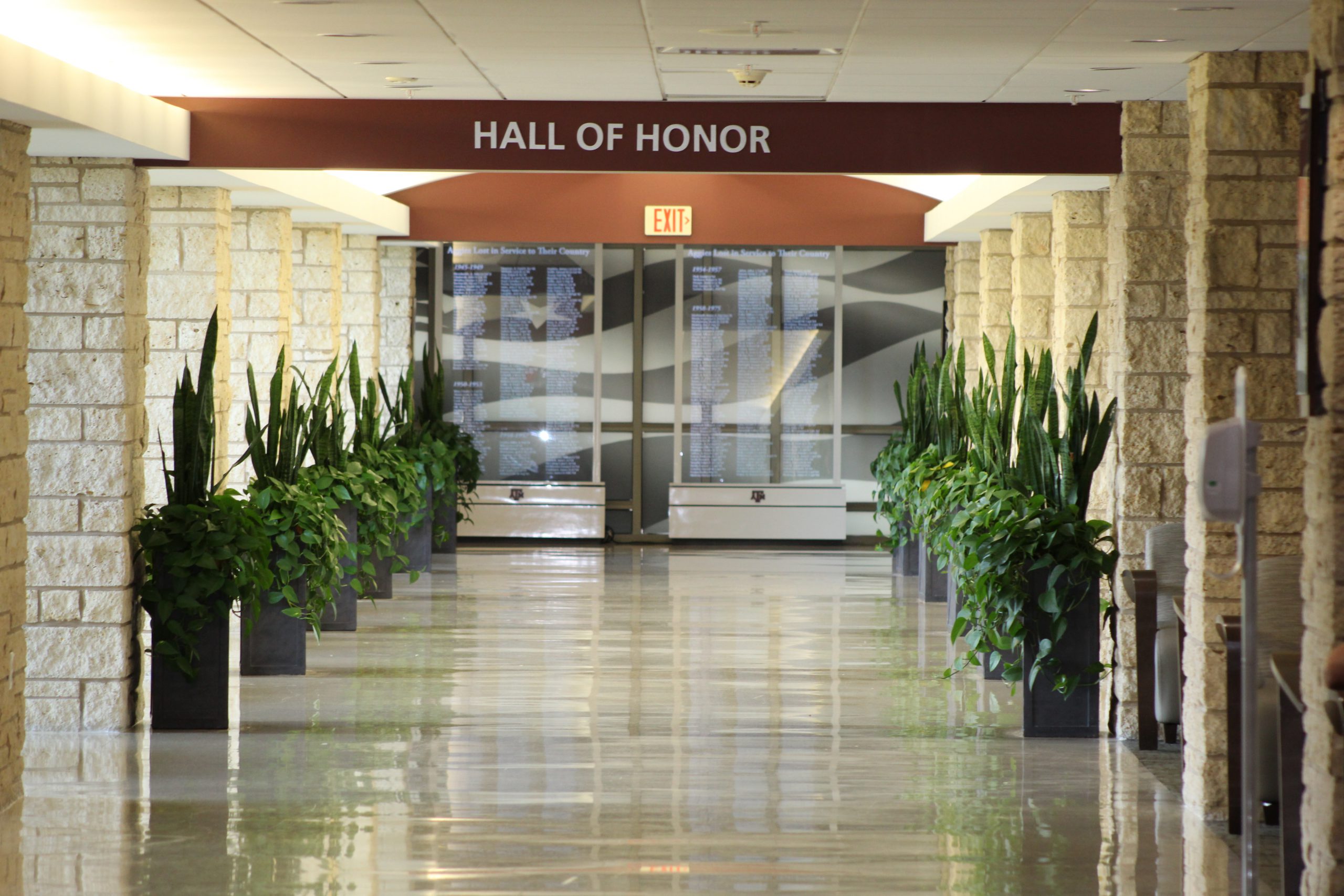
The Hall of Honor is located inside the Memorial Student Center along the north side of the main floor across from Simpson Drill Field. Established during the 2009-2012 MSC renovation, the Hall of Honor contains the biographies, likeness and replica medals of the Aggies who have received the Congressional Medal of Honor.
The original Medals of Honor for several of the recipients can be found in the Sanders Corps Center.
The Hall of Honor is currently working to make updates to showcase the ninth Aggie to be awarded the Medal of Honor and to create space for any other Aggies who receive the recognition. If you would like to give to this project or to other initiatives that honor those who serve, visit the Texas A&M Foundation's website.
Explore the Hall of Honor
Campus Location

READ MORE: Meet Each Medal of Honor Aggie
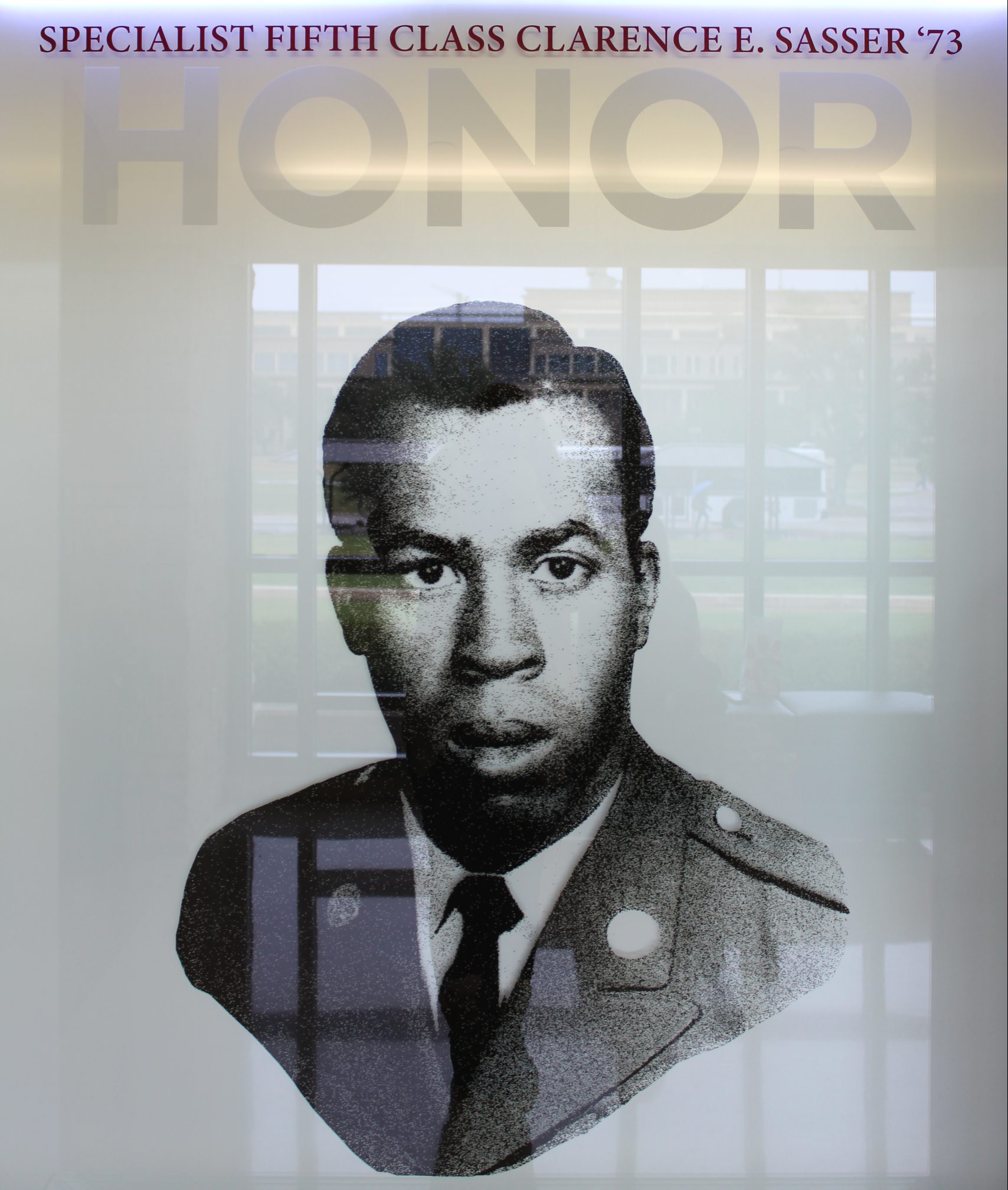
Specialist Fifth Class Clarence E. Sasser, 60th Infantry, 9th Infantry Division, for conspicuous gallantry and intrepidity in action at the risk of his life above and beyond the call of duty on a reconnaissance in force operation as a medical aidman with Company A, 3rd Battalion on Dinh Tuong Province, Republic of Vietnam, 10th January 1968.
His company was making an air assault when suddenly it was taken under heavy small arms, recoilless rifle, machine gun, and rocket fire from well-fortified enemy positions on three sides of the landing zone. During the first few minutes, over 30 casualties were sustained. Without hesitation, Sp5c. Sasser ran across an open rice paddy through a hail of fire to assist the wounded. After helping one man to safety, he was painfully wounded in the left shoulder by fragments of an exploding rocket. Refusing medical attention, he ran through a barrage of rocket and automatic weapons fire to aid casualties of the initial attack and, after giving them urgently needed treatment, continued to search for other wounded. Despite two additional wounds immobilizing his legs he dragged himself through the mud toward another soldier 100 meters away. Although in agonizing pain and faint from loss of blood, Sp5c. Sasser reached the man, treated him and proceeded on to encourage another group of soldiers to crawl 200 meters to relative safety. There he attended their wounds for five hours until they were evacuated. Sp5c. Sasser's extraordinary heroism is in keeping with the highest traditions of the military service and reflects great credit upon himself, his unit, and the U.S. Army.
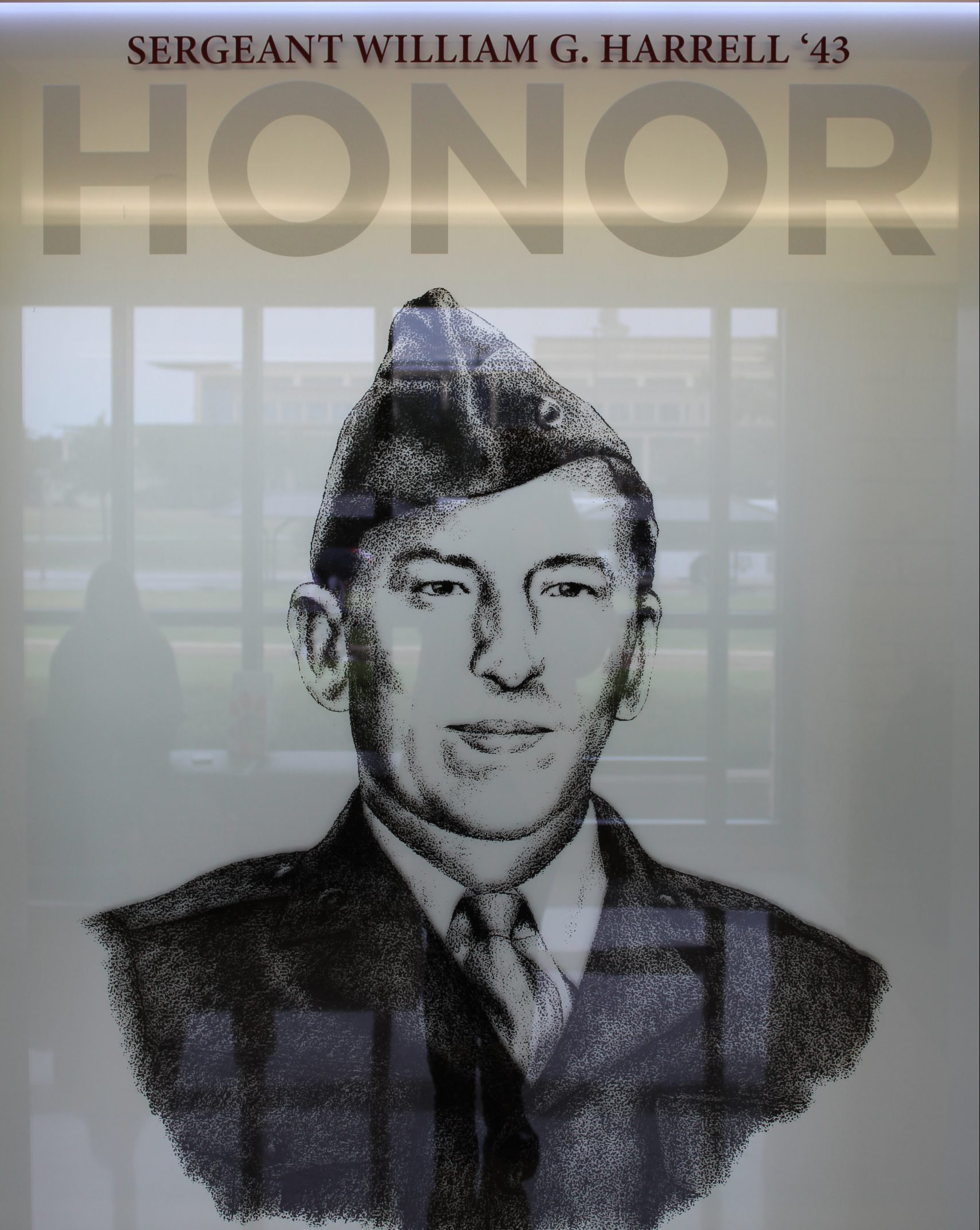
Sergeant William G. Harrell, United States Marine Corps, for conspicuous gallantry and intrepidity at the risk of his life above and beyond the call of duty as leader of an assault group attached to the First Battalion, Twenty-Eighth Marines, Fifth Marine Division during hand-to-hand combat with enemy Japanese at Iwo Jima, Volcano Islands, on 3 March 1945.
Standing watch alternately with another Marine in a terrain studded with caves and ravines, Sergeant Harrell was holding a position in a perimeter defense around the company command post when Japanese troops infiltrated our lines in the early hours of dawn. Awakened by a sudden attack, he quickly opened fire with his carbine and killed two of the enemy as they emerged from a ravine in the light of a star shellburst. Unmindful of his danger as hostile grenades fell closer, he waged a fierce lone battle until an exploding missile tore off his left hand and fractured his thigh. He was vainly attempting to reload the carbine when his companion returned from the command post with another weapon. Wounded again by a Japanese who rushed the foxhole wielding a saver in the darkness, Sergeant Harrell succeeded in drawing his pistol and killing his opponent and then ordered his wounded companion to a place of safety. Exhausted by profuse bleeding but still unbeaten, he fearlessly met the challenge of two more enemy troops who charged his position and placed a grenade near his head. Killing one man with his pistol, he grasped the sputtering grenade with his good right hand and, pushing it painfully toward the crouching soldier, saw his remaining assailant destroyed but his own hand severed in the explosion. At dawn Sergeant Harrell was evacuated from a position hedged by the bodies of the 12 dead Japanese, at least five of whom he had personally destroyed in his self-sacrificing defense of the command post. His grim fortitude, exceptional valor, and indomitable fighting spirit against almost insurmountable odds reflect the highest credit upon himself and enhance the finest traditions of the United States Naval Service.

First Lieutenant Eli L. Whiteley, Company L, 15th Infantry Regiment, 3rd Infantry Division, for conspicuous gallantry and intrepidity at the risk of life above and beyond the call of duty.
Lieutenant Whiteley, while leading his platoon on 27 December 1944, in savage house-to-house fighting through the fortress town of Sigolsheim, France, attacked a building through a street swept by withering mortar and automatic weapons of fire. He was hit and severely wounded in the arm and shoulder; but he charged into the house alone and killed its two defenders. Hurling smoke and fragmentation grenades before him, he reached the next house and stormed inside, killing two and capturing 11 of the enemy. He continued leading his platoon in the extremely dangerous task of clearing hostile troops from strong points along the street until he reached a building held by fanatical Nazi troops. Although suffering from wounds which had rendered his left arm useless, he advanced on this strongly defended house, and after blasting out a wall with bazooka-fire, charged through a hail of bullets. Wedging his submachine gun under his uninjured arm, he rushed into the house through the hole torn by his rockets, killed five of the enemy, and forced the remaining 12 to surrender. As he emerged to continue his fearless attack, he was again hit and critically wounded. In agony and with one eye pierced by a shell fragment, he shouted for his men to follow him to the next house. He was determined to stay in the fighting and remained at the head of his platoon until forcibly evacuated. By his disregard for personal safety, aggressiveness while suffering from severe wounds, his determined leadership and superb courage, Lieutenant Whiteley killed nine Germans, captured 23 more, and spearheaded an attack which cracked the core of enemy resistance in a vital area.
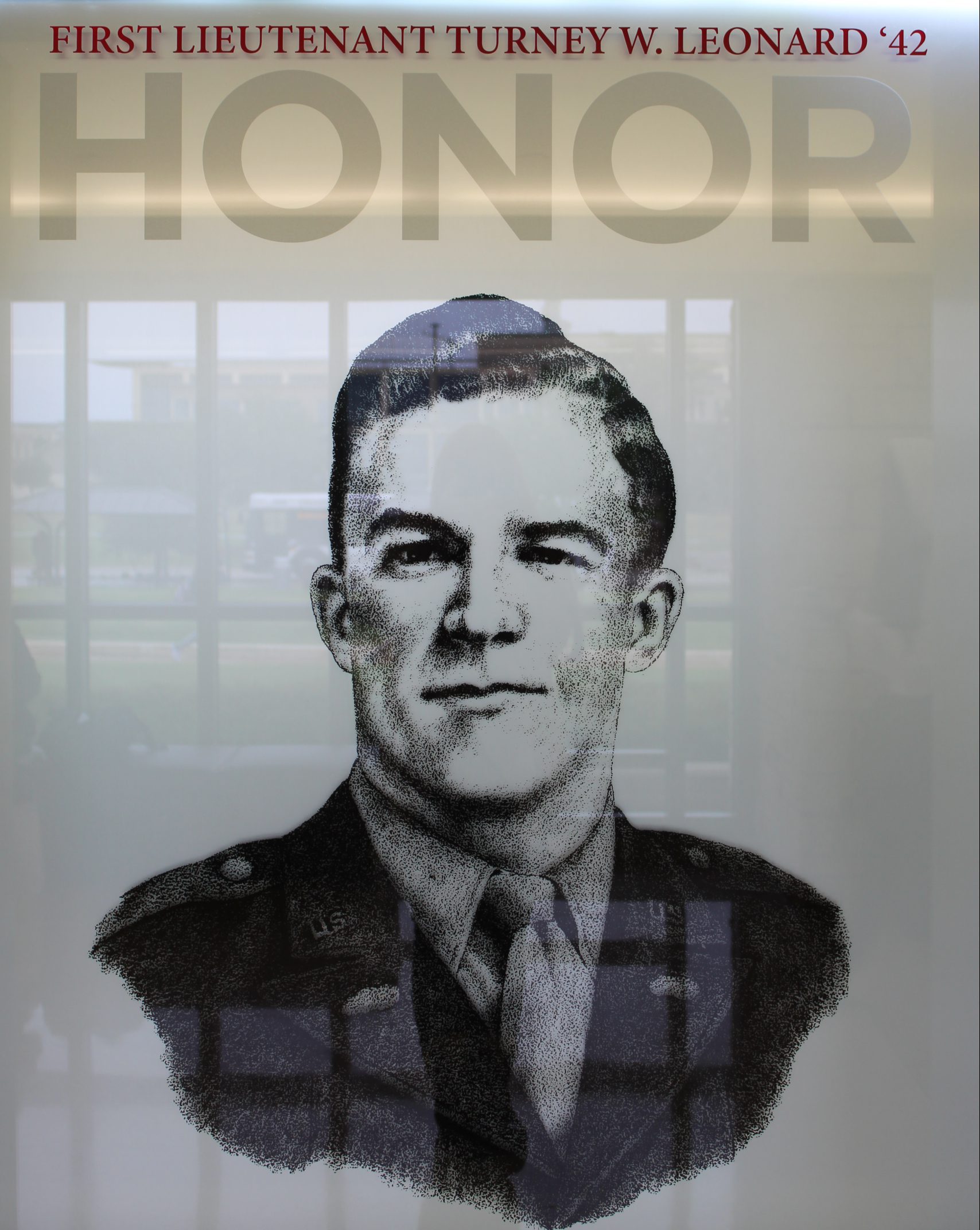
First Lieutenant Turney W. Leonard, Company C, 893rd Tank Destroyer Battalion, for conspicuous gallantry and intrepidity at the risk of life above and beyond the call of duty.
Lieutenant Leonard displayed extraordinary heroism while commanding a platoon of mobile weapons on Kommerscheidt, Germany, on 4, 5 and 6 November 1944. During the fierce three-day engagement, he repeatedly braved overwhelming enemy fire in advance of his platoon to direct the fire of his tank destroyers from exposed, dismounted positions. He went on lone reconnaissance missions to discover what opposition his men faced, and on one occasion, when fired upon by a hostile machine gun, advanced alone and eliminated the enemy emplacement with a hand grenade. When a strong German attack threatened to overrun friendly positions, he moved through withering artillery, mortar, and small-arms fire, reorganized confused infantry units whose leaders had become casualties, and exhorted them to hold firm. Although wounded early in battle, he continued to direct fire from his advanced position until he was disabled by a high-explosive shell which shattered his arm, forcing him to withdraw. He was last seen at a medical aid station which was subsequently captured by the enemy. By his superb courage, inspiring leadership, and indomitable fighting spirit, Lieutenant Leonard enabled our forces to hold off the enemy attack and was personally responsible for the direction of fire which destroyed six German tanks.

Major Horace S. Carswell, Jr., 308th Bombardment Group, piloted a B-24 bomber in a one-plane strike against a Japanese convoy in the South China Sea on the night of 26 October 1944. Taking the enemy force of 12 ships escorted by at least two destroyers by surprise, he made one bombing run at 600 feet, scoring a near miss on one warship and escaping without drawing fire. He circled and, fully realizing that the convoy was thoroughly alerted and would meet his next attack with barrage of antiaircraft fire, began a second low-level run which culminated in two direct hits on a large tanker. A hail of steel from Japanese guns riddled the bomber, knocking out two engines, damaging a third, crippling the hydraulic system, puncturing one gasoline tank, ripping uncounted holes in the aircraft, and wounding the copilot; but by magnificent display of flying skill, Major Carswell controlled the plane’s plunge toward the sea and carefully forced it into a halting climb in the direction of the China shore. On reaching land, where it would have been possible to abandon the staggering bomber, one of the crew discovered that his parachute had been ripped by flak and rendered useless; the pilot, hoping to cross mountainous terrain and reach a base, continued onward until the third engine failed. He ordered the crew to bail out while he struggled to maintain altitude, and, refusing to save himself, chose to remain with his comrade and attempt a crash landing. He died when the airplane struck a mountainside and burned, with consummate gallantry and intrepidity, Major Carswell gave his life in a supreme effort to save all members of his crew. His sacrifice, far beyond that required of him, was in keeping with the traditional bravery of America’s war heroes.

Second Lieutenant Lloyd H. Hughes, 564th Bombardment Squadron, 9th Air Force, for conspicuous gallantry in action and intrepidity at the risk of his life above and beyond the call of duty.
On 1 August 1943 Lieutenant Hughes served in the capacity of pilot of a heavy bombardment aircraft participating in a long and hazardous minimum-altitude attack against the Axis oil refineries of Ploesti, Romania, launched from the northern shores of Africa. Flying in the last formation to attack the target, he arrived in the target area after previous flights had thoroughly alerted the enemy defenses. Approaching the target through intense and accurate antiaircraft fire and dense balloon barrages at dangerously low altitude, his plane received several direct hits from both large and small caliber antiaircraft guns which seriously damaged his aircraft, causing sheets of escaping gasoline to stream from the bomb bay and from the left wing. This damage was inflicted at a time prior to reaching the target when Lieutenant Hughes could have made a forced landing in any of the grain fields readily available at that time. The target area was blazing with burning oil tanks and damaged refinery installations from which flames leaped high above the bombing level of the formation. With full knowledge of the consequences of entering this blazing inferno when his airplane was profusely leaking gasoline in two separate locations, Lieutenant Hughes, motivated only by his high conception of duty which called for the destruction of his assigned target at any cost, did not elect to make a forced landing or turn back from the attack. Instead, rather than jeopardize the formation and the success of the attack, he unhesitatingly entered the blazing area and dropped the bomb load with great precision. After successfully bombing the objective, his aircraft emerged from the conflagration with the left wing aflame. Only then did he attempt a forced landing, but because of the advanced stage of the fire enveloping his aircraft, the plane crashed and was consumed. By Lieutenant Hughes’ heroic decision to complete his mission regardless of the consequences in utter disregard of his own life and by his gallant and valorous execution of this decision, he has rendered a service to our country in the defeat of our enemies which will everlastingly be outstanding in the annals of our Nation’s history.

Second Lieutenant Thomas W. Fowler, Cavalry, 191st Tank Battalion, 1st Armored Division, for conspicuous gallantry and intrepidity, at risk of life, above and beyond the call of duty on 23 May 1944 in the vicinity of Carano, Italy.
In the midst of a full-scale armored-infantry attack, Lieutenant Fowler, while on foot, came upon two completely disorganized infantry platoons held up in their advance by an enemy minefield. Although a tank officer, he immediately reorganized the infantry. He then made a personal reconnaissance through the minefield, clearing a path as he went, by lifting the antipersonnel mines out of the ground with his hands. After he had gone through the seventy-five yard belt of deadly explosives, he returned to the infantry and led them through the minefield, a squad at a time. As they deployed, Lieutenant Fowler, despite small-arms fire and the constant danger of antipersonnel mines, made a reconnaissance into enemy territory in search of a route to continue the advance. He then returned through the minefield and, on foot, he led the tanks through the mines into a position from which they could best support the infantry. Acting as scout three hundred yards in front of the infantry, he led the two platoons forward until he had gained his objective, where he came upon several dug-in enemy infantrymen. Having taken them by surprise, Lieutenant Fowler dragged them out of their foxholes and sent them to the rear; twice, when they resisted, he threw hand grenades into their dugouts. Realizing that a dangerous gap existed between his company and the unit to his right, Lieutenant Fowler decided to continue his advance until the gap was filled. He reconnoitered the area to his front, brought the infantry into position where they dug in and, under heavy mortar and small-arms fire, brought his tanks forward. A few minutes later, the enemy began an armored counterattack. Several Mark VI tanks fired their cannons directly on Lieutenant Fowler’s position. One of his tanks was set afire. With utter disregard for his own life, with shells bursting near him, he ran directly into the enemy tank fire to reach the burning vehicle. For one-half hour, under intense strafing from the advancing tanks, although all other elements had withdrawn, he remained in his forward position, attempting to save the lives of the wounded tank crew. Only when the enemy tanks had almost overrun him, did he withdraw a short distance where he personally rendered first aid to nine wounded infantrymen in the midst of the relentless incoming fire. Second Lieutenant Fowler’s courage, his ability to estimate the situation and to recognize his full responsibility as an officer in the Army of the United States, exemplify the high tradition of the military service for which he later gave his life.
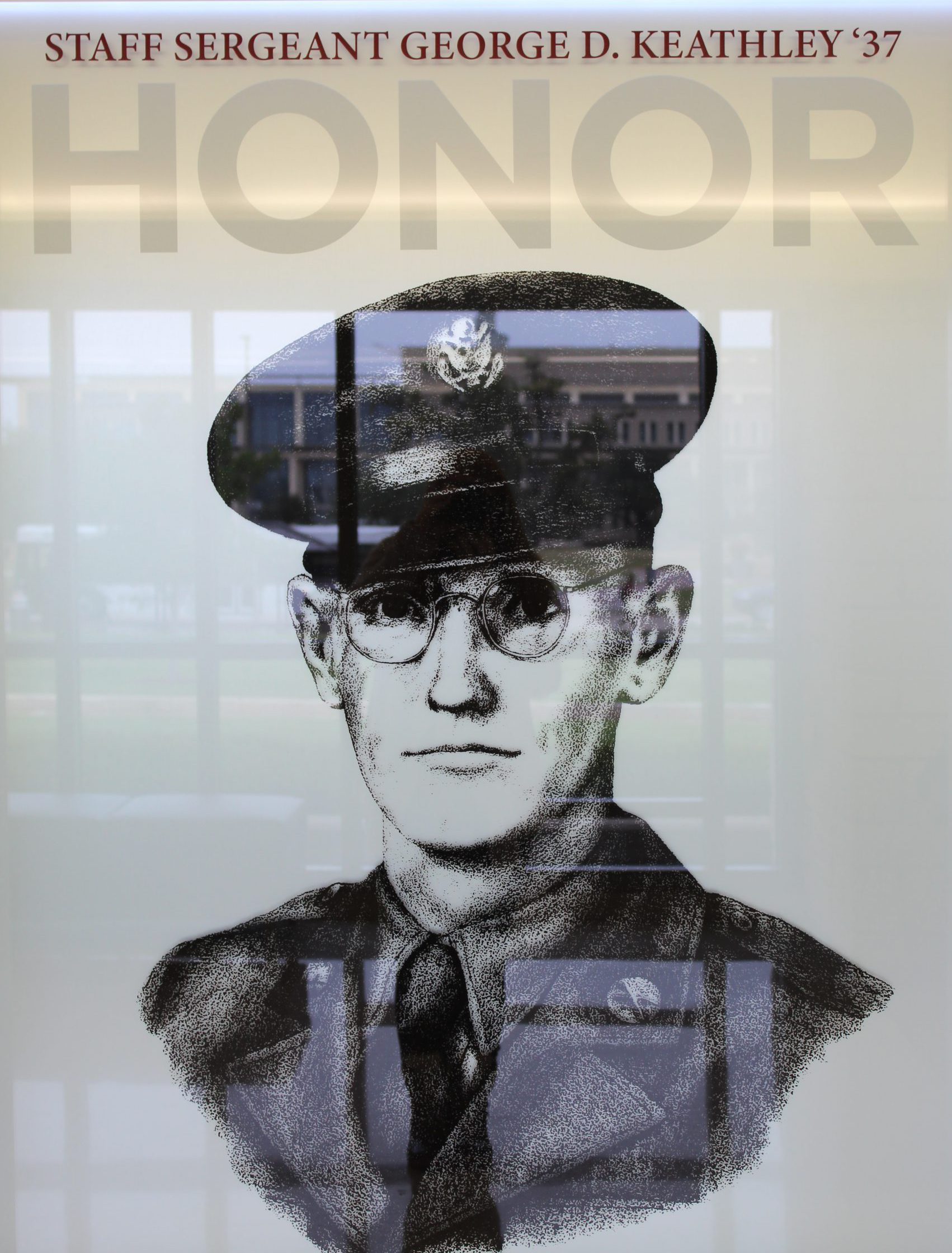
Staff Sergeant George D. Keathley, 338th Infantry, 85th Infantry Division, for conspicuous gallantry and intrepidity at risk of life above and beyond the call of duty, in action on 14 September 1944, on the western ridge of Mt. Altuzzo, Italy.
After bitter fighting his company had advanced to within fifty yards of their objective, where it was held up due to intense enemy sniper, automatic, small-arms and mortar fire. The enemy launched three desperate counterattacks in an effort to regain their former positions, but all three were repulsed with heavy casualties on both sides. All officers and non-commissioned officers of the Second and Third platoons of Company B had become casualties, and Staff Sergeant Keathley, guide of the First platoon, moved up and assumed command of both the Second and Third platoons, reduced to twenty men. The remnants of the two platoons were dangerously low on ammunition, so Staff Sergeant Keathley, under deadly small-arms and mortar fire, crawled from one casualty to another, collecting their ammunition and administering first aid. He then visited each man of his two platoons, issuing the precious ammunition he had collected from the dead and wounded, and giving them words of encouragement. The enemy now delivered their fourth counterattack, which was approximately two companies in strength. In a furious charge they attacked from the front and both flanks, throwing hand grenades, firing automatic weapons, and assisted by a terrific mortar barrage. So strong was the enemy counterattack that the company was given up for lost. The remnants of the Second and Third platoons of Company B were now looking to Staff Sergeant Keathley for leadership. He shouted his orders precisely and with determination and the men responded with all that was in them. Time after time the enemy tried to drive a wedge into Staff Sergeant Keathley’s position and each time they were driven back, suffering huge casualties. Suddenly an enemy hand grenade hit and exploded near Staff Sergeant Keathley, inflicting a mortal wound in his left side. However, hurling defiance at the enemy, he rose to his feet. Taking his left hand away from his wound and using it to steady his rifle, he fired and killed an attacking enemy soldier and continued shouting orders to his men. His heroic and intrepid action so inspired his men that they fought with incomparable determination and viciousness. For fifteen minutes Staff Sergeant Keathley continued leading his men and effectively firing his rifle. He could have sought a sheltered spot and perhaps saved his life, but instead he elected to set an example for his men and make every possible effort to hold his position. Finally, friendly artillery fire helped to force the enemy to withdraw, leaving behind many of their number either dead or seriously wounded. Staff Sergeant Keathley died a few moments later. Had it not been for his indomitable courage and incomparable heroism, the remnants of three rifle platoons of Company B might well have been annihilated by the overwhelming enemy attacking force. His actions were in keeping with the highest traditions of the military service.
Sergeant Matthew O. Williams distinguished himself by acts of gallantry and intrepidity above and beyond the call of duty on April 6, 2008, while serving as a Weapons Sergeant, Special Forces Operational Detachment Alpha 3336, Special Operations Task Force-33, in support of Operation ENDURING FREEDOM. Sergeant Williams was part of an assault element inserted by helicopter into a location in Afghanistan. As the assault element was moving up a mountain toward its objective, it was engaged by intense enemy machine gun, sniper, and rocket-propelled grenade fire. The lead portion of the assault element, which included the ground commander, sustained several casualties and became pinned down on the sheer mountainside. Sergeant Williams, upon hearing that the lead element had sustained casualties and was in danger of being overrun, braved intense enemy fire to lead a counter-attack across a valley of ice-covered boulders and a fast-moving, ice cold, and waist-deep river. Under withering fire, Sergeant Williams and his local national commandos fought up the terraced mountainside to the besieged element. Arriving at the lead element’s position, Sergeant Williams arrayed his Afghan commandos to provide suppressive fire, which kept the insurgent fighters from overrunning the position. When the Team Sergeant was wounded, Sergeant Williams braved enemy fire once again to provide buddy-aid and to move the Team Sergeant down the sheer mountainside to the casualty collection point. Sergeant Williams then fought and climbed his way back up the mountainside to help defend the lead assault element that still had several serious casualties in need of evacuation. Sergeant Williams directed suppressive fire and exposed himself to enemy fire in order to reestablish the team’s critical satellite radio communications. He then assisted with moving the wounded down the near-vertical mountainside to the casualty collection point. Noting that the collection point was about to be overrun by enemy fighters, Sergeant Williams led the Afghan commandos in a counter-attack that lasted for several hours. When helicopters arrived to evacuate the wounded, Sergeant Williams again exposed himself to enemy fire, carrying and loading casualties onto the helicopters while continuing to direct commando firepower to suppress numerous insurgent positions. His actions enabled the patrol to evacuate wounded and dead comrades without further casualties. Sergeant Williams’ complete disregard for his own safety and his concern for the safety of his teammates ensured the survival of four critically wounded soldiers and prevented the lead element of the assault force from being overrun by the enemy. Sergeant Williams' actions are in keeping with the finest traditions of military service and reflect great credit upon himself, Combined Joint Special Operations Task Force-Afghanistan, Special Operations Command Central, and the United States Army.
